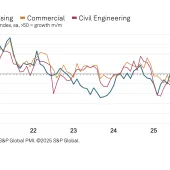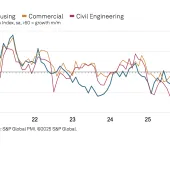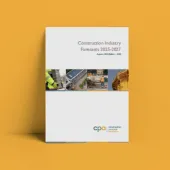CPA assesses impact of COVID-19 on construction output

Even under the most optimistic scenario, construction output is set to see sharpest fall on record, says CPA
TOTAL construction output in Great Britain is expected to decline by 25% during 2020, according to the most optimistic of three possible scenarios for construction output examined by the Construction Products Association (CPA).
Yet even in this most optimistic case, the country’s construction activity would suffer its sharpest fall ever recorded. The pause to construction work as a result of COVID-19 social distancing measures is the main cause of the fall, with 60% of planned construction output lost in April due to the measures.
Given that the effects of the pandemic are so wide ranging and lacking in precedents, and that the full impact on the UK economy and construction will only become clear once the duration, severity and effects of social distancing requirements become apparent, the CPA has developed a series of three scenarios to assess the impact of COVID-19 on construction output.
The most optimistic scenario is based on a V-shaped recession affecting primarily the second half of March, April and May, followed by a recovery from June 2020 but at a slower pace than the initial decline.
The other scenarios include a W-shaped recession (a second wave of infection and lockdown in the fourth quarter of 2020 and subsequent recovery in the first quarter of 2021) and a U-shaped recession (continued restrictions throughout 2020 and a slow recovery in 2021 as businesses and consumers come out of them highly risk-averse).
The CPA’s economics director, Noble Francis (pictured), said: ‘The greatest impacts of the lockdown in construction were seen in the private housing sector. Returns to site in May will focus on partially completed developments rather than new starts as house builders are expected to be very cautious given uncertainty regarding demand.
‘A more positive outlook is expected for infrastructure activity, thanks to a greater ability to implement safe distancing for workers on larger sites but also, vitally, thanks to HS2 being given the go-ahead to proceed. An increase in activity from the five-year investment programmes within regulated sectors such as water and sewerage, roads and rail also adds to this more positive story.
‘For the fortunes of construction more generally, though, the near-term effects of COVID-19 on the economy and employment are likely to be considerably greater than those faced during the financial crisis of 2008/09. In addition to the issues around the general economy and construction demand, productivity on site has fallen significantly due to social distancing and other safety measures, which means that construction activity will take longer and cost more.
‘Even in our most optimistic scenario, construction output bounces back by 25.5% in 2021 but, with growth starting from a low base, will still be 6% lower than in 2019. Combined with the high levels of uncertainty on demand, getting levels of construction back to pre-coronavirus levels will take time. Expect a long slog ahead.’









